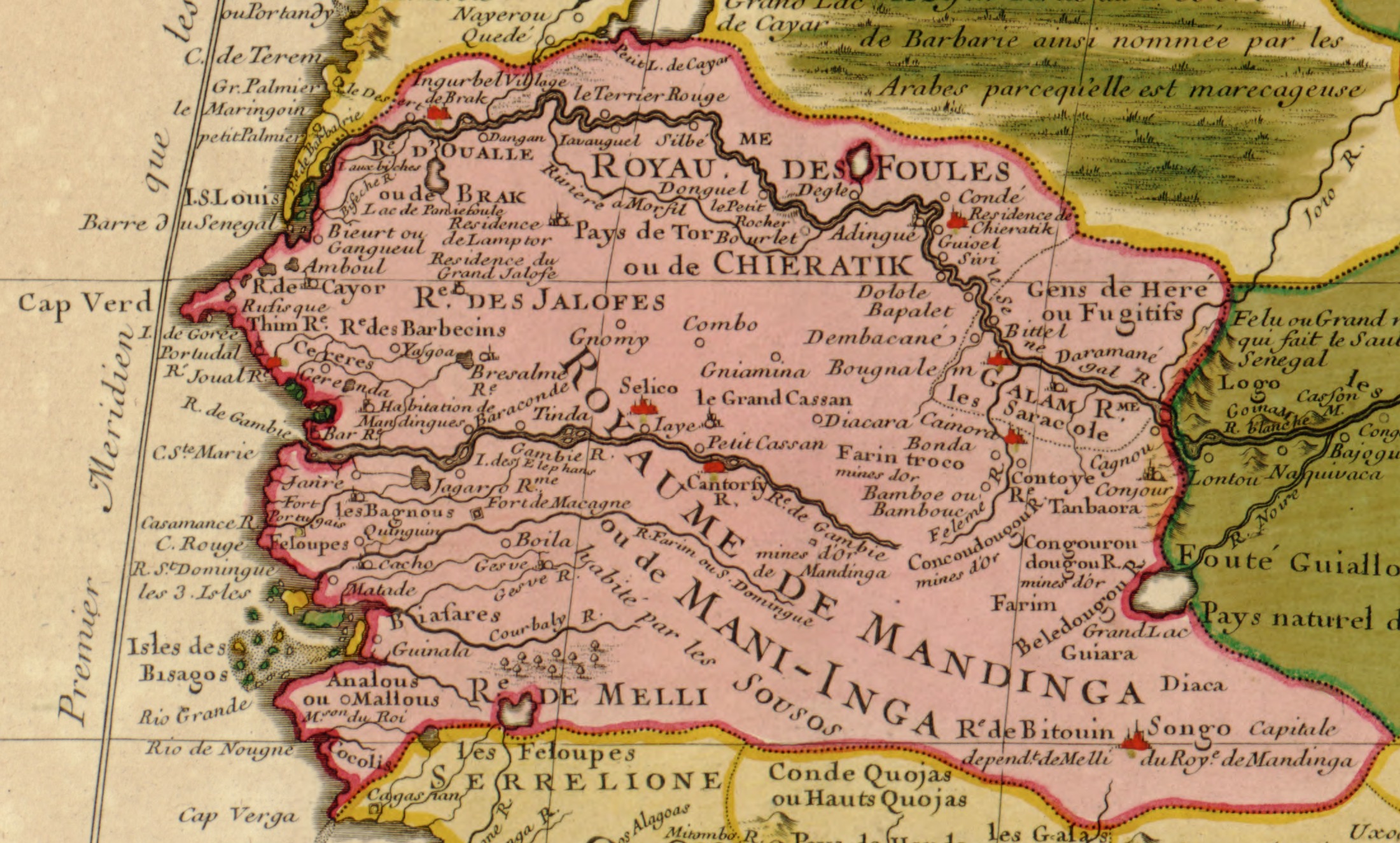|
Dece Fu Njogu
Dece Fu Njogu ( wo, Decee Fu Njoogu; french: Détié Fou Ndiogou) was a king of Cayor Cayor ( wo, Kajoor; ar, كاجور) was the largest and most powerful kingdom (1549–1879) that split off from the Jolof Empire in what is now Senegal. Cayor was located in northern and central Senegal, southeast of Walo, west of the kingdom ... in the 16th century. In 1549, he gained his country's independence from the country Jolof and later rapidly took over it. He is known for his military invasions of Kaabu and Fouta Tooro. He died in 1599, in Ndakaru, nowadays known as Dakar. History of Senegal Year of birth missing Year of death missing {{Africa-hist-stub ... [...More Info...] [...Related Items...] OR: [Wikipedia] [Google] [Baidu] |
Cayor
Cayor ( wo, Kajoor; ar, كاجور) was the largest and most powerful kingdom (1549–1879) that split off from the Jolof Empire in what is now Senegal. Cayor was located in northern and central Senegal, southeast of Walo, west of the kingdom of Jolof, and north of Baol and the Kingdom of Sine. History In 1549, the damel (''dammeel'' in Wolof, often translated into European languages as "king") Dece Fu Njogu became independent from Jolof and set Cayor's capital at Mboul. The French, under governor Louis Faidherbe, annexed Cayor in 1868; Cayor re-established independence in 1871. France invaded again and annexed Cayor again in 1879, when it ceased to be a sovereign state. The kingdom was extinguished in its entirety October 6, 1886. In addition to Cayor, the damels also ruled over the Lebou area of Cap-Vert (where modern Dakar is), and they became the " Teignes" (rulers) of the neighboring kingdom of Baol. Traditionally the damel himself was not purely hereditary, but ... [...More Info...] [...Related Items...] OR: [Wikipedia] [Google] [Baidu] |
Jolof Empire
Jolof (french: Djolof or ') may refer to either of * Jolof Empire, a West African successor state to the Mali Empire in modern Senegal Senegal,; Wolof: ''Senegaal''; Pulaar: 𞤅𞤫𞤲𞤫𞤺𞤢𞥄𞤤𞤭 (Senegaali); Arabic: السنغال ''As-Sinighal'') officially the Republic of Senegal,; Wolof: ''Réewum Senegaal''; Pulaar : 𞤈𞤫𞤲𞤣𞤢𞥄𞤲𞤣𞤭 ... from the 14th to 16th centuries * Kingdom of Jolof, a rump survival of the earlier empire from the 16th to the 19th centuries See also * Jollof rice {{dab ... [...More Info...] [...Related Items...] OR: [Wikipedia] [Google] [Baidu] |
History Of Senegal
The history of Senegal is commonly divided into a number of periods, encompassing the prehistoric era, the precolonial period, colonialism, and the contemporary era. Paleolithic The earliest evidence of human life is found in the valley of the Falémé in the south-east. The presence of man in the Lower Paleolithic is attested by the discovery of stone tools characteristic of Acheulean such as hand axes reported by Théodore Monod at the tip of Fann in the peninsula of Cap-Vert in 1938, or cleavers found in the south-east. There were also found stones shaped by the Levallois technique, characteristic of the Middle Paleolithic. Mousterian Industry is represented mainly by scrapers found in the peninsula of Cap-Vert, as well in the low and middle valleys of the Senegal and the Falémé. Some pieces are explicitly linked to hunting, like those found in Tiémassass, near M'Bour, a controversial site that some claim belongs to the Upper Paleolithic, while other argue in favor of t ... [...More Info...] [...Related Items...] OR: [Wikipedia] [Google] [Baidu] |
Year Of Birth Missing
A year or annus is the orbital period of a planetary body, for example, the Earth, moving in its orbit around the Sun. Due to the Earth's axial tilt, the course of a year sees the passing of the seasons, marked by change in weather, the hours of daylight, and, consequently, vegetation and soil fertility. In temperate and subpolar regions around the planet, four seasons are generally recognized: spring, summer, autumn and winter. In tropical and subtropical regions, several geographical sectors do not present defined seasons; but in the seasonal tropics, the annual wet and dry seasons are recognized and tracked. A calendar year is an approximation of the number of days of the Earth's orbital period, as counted in a given calendar. The Gregorian calendar, or modern calendar, presents its calendar year to be either a common year of 365 days or a leap year of 366 days, as do the Julian calendars. For the Gregorian calendar, the average length of the calendar ... [...More Info...] [...Related Items...] OR: [Wikipedia] [Google] [Baidu] |


